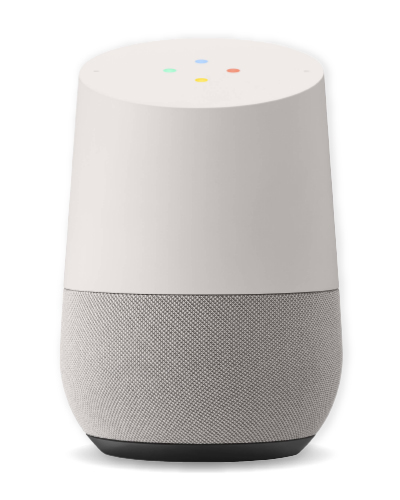Technology continues to play a large role in our lives, from serving as a resource for information to providing a quick and easy way to order groceries online.
To serve the increasing number of digital-savvy consumers in the current on-demand retail environment, companies such as Apple, Google and Amazon continue to develop technology to keep up with the wants and needs of the consumer, specifically through voice-assisted devices.
The origins of the voice assistant started with Apple when they introduced Siri on October 4, 2011. Several years later, Google unveiled Google Home, Microsoft rolled out Cortana and Amazon developed Alexa, flooding the market with new devices. By 2019, there were an estimated 3.25 billion voice assistants used across the world.1 The projected increase in digital voice assistants use is expected to increase from 2.5 billion in 2018 to over 88 billion by 2023.2
 Advertisers can now reach the average consumer while they’re in-home or simply completing a voice search on their mobile devices. With expanding technology from top tech companies comes expanded opportunities for buyers to purchase goods or services and for advertisers to reach consumers through these devices.
Advertisers can now reach the average consumer while they’re in-home or simply completing a voice search on their mobile devices. With expanding technology from top tech companies comes expanded opportunities for buyers to purchase goods or services and for advertisers to reach consumers through these devices.
A. Bright Idea recommends the following strategies for integrating voice assistants into your advertising strategies in 2020:
1. Follow the users
The top contenders, Amazon and Google reach most voice assistant users and capture the in-home audience.3 By purchasing advertising units through top companies as listed previously and various applications, such as Pandora, you are able to target specific consumers in real-time. Ads placed within relevant content resonates best with the target audience and ensures the call-to-action is heard.
2. Integrate into the overall plan
The voice assistant tactic should integrate seamlessly into the current audio or digital portion of the full advertising strategy. It is important from a creative standpoint to allow assets used to span across multiple tactics and mediums. Incorporating this tactic can also help reach a new audience not previously reached.
3. Tailor creative
A. Bright Idea recommends tailoring the creative not only to the audience but keeping the placement in mind as well. A. Bright Idea customized creative messaging for the U.S. Drug Enforcement Administration’s National Prescription Drug Take Back Day campaign using Pandora’s connected home placements. Using language specifically for the in-home listener, DEA’s messaging focused on taking an immediate action within the home to connect with audiences in the moment.
Moving forward and throughout 2020, advertisers can take full advantage of not only the voice assistants, but also other digital tech in development with top companies. The trend of voice assistants will increase while consumers will become less reliant on digital screens.2 While the ways to reach target audiences become more diverse, remember that the way advertisers utilize specific creative and placements help drive the success of the specific advertisement within the campaign.
Looking for more advertising expertise? Try this – Advertising in 2020 – The Digital Media Solution
Sources:
1 Statista, Number of digital voice assistants in use worldwide from 2019 to 2023 (in billions)*, November 2019, available at: https://www.statista.com/statistics/973815/worldwide-digital-voice-assistant-in-use/
2 Centro Institute, 20/20 on 2020 Trends and predictions for the future of marketing, September 2019
3 Voicebot.ai, Google Home Added 600,000 More U.S. Users in 2018 Than Amazon Echo, But Amazon Echo Dot is Still the Most Owned Smart Speaker, March 2019, available at: https://voicebot.ai/2019/03/07/google-home-added-600000-more-u-s-users-in-2018-than-amazon-echo-but-amazon-echo-dot-is-still-the-most-owned-smart-speaker/
